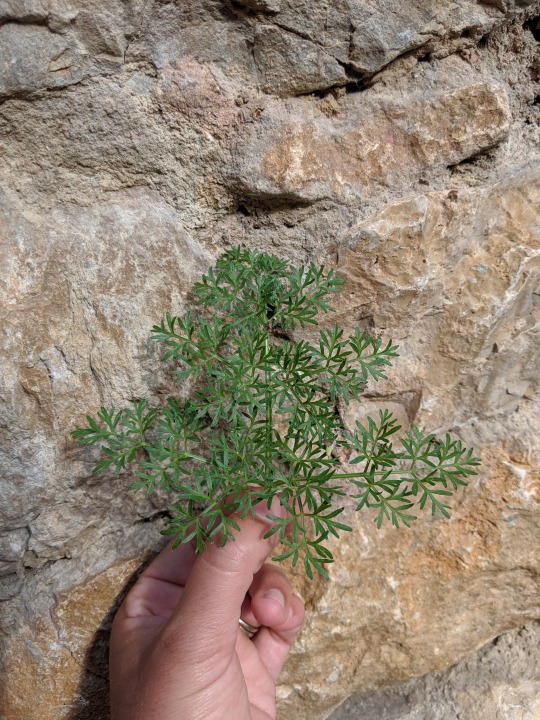Don't wanna be here? Send us removal request.
Link
1 note
·
View note
Text
Is a cloister a school?
Could we use the cloister model as a school model? With a central courtyard where people can learn about production and medicinal plants, and with corners that are far enough where classes can take place without interrupting one another?
0 notes
Text
Bees
Valderredible is full of bees - we should encourage the planting of native flowers for them to pollinate and for Valderredible to get yet another product in their portfolio - honey and mead.
0 notes
Text
Orbaneja del Castillo - Framing the natural environment
What made this town so special was its ability to frame what nature had given it as a gift. The surprise element when turning a corner and seeing a beautiful union of turquoise lakes. The intimacy of using pedestrian cul de sacs for accessing the homes. The subtlety with which the buildings grazed the geoformations on the cliff, giving way to caves.
It only makes sense that we all fell inlove with this town, and that Anna will start a commune here.
0 notes
Text
Utilizing Beauty instead of Signalization
Why do we need a sign that says “Slow down” for cars when we can just plop a building in the middle of the road that clearly states that they must slow down?
Why use a sign that says “Plaza this way -->” when we can use an arch or monument to signal that there is something important and beautiful about to happen.
Why do we prioritize “navigation” or grid methods over interesting and inspiring walks filled with nooks for relaxation and appreciation of the beauty of the world?
0 notes
Text
Plazas and Nodes
Every 100-120 meters there is a node or a plaza. Every plaza or node has a different function, not all of them are large. As a matter of fact, most of them are small intimate spaces for human gathering. Including Plazas and Nodes in town planning make us more human.
0 notes
Text
On the urban space as a tool to fighting global warming
Why do we not walk in certain cities or towns? Is it because walking 10 to 20 minutes from one point to the other is too much? Well, I actually think that a 15 minute walk is rather nice, so why dont we do it?
Because a 15 minute walk on the sun, without points of interest and resting points, is unbearable. So, if we want to give people an incentive to walk in a town of city we must plan it in such a way that we provide people a pleasant experience. Having people walk or ride a bike rather than using a car is one of the ways in which we can fight global warming. Giving people water fountains in the city so they dont have to buy water bottles reduces our plastic consumption. Creating more humane cities makes our life better.
0 notes
Text
Natural Materials and Traditional Architecture
I have a new motto - Leave No Trace Architecture
Traditional Architecture is not only one that continues with a design tradition based on a common regional language (for example, in the Mediterranean this common language comes from Greece and Istambul/The islamic world). Traditional architecture is also strongly based on localism of materials, meaning using the materials that people could find near them, and passive methods of heating and cooling their homes. What the sum of this parts adds up to, is the use of natural materials that can decompose and become part of the earth again or be re-used over time. Here are some examples:
-Stone Walls
-Timber Framing
-Earth and Lime Mortar
-Lime Stucco
-Tapial/Adobe/Earth Construction
-Ceramic Tiles
-Terracotta Roof Tiles
-Stucco Walls
-Lime Decorations
-Thatched Roofs
0 notes
Text
On why this wasnt a life feed, but was a good thing after all
What I thought would be a really easy task to fulfill, to update this blog daily, was clearly a fail on my part. However, this fail came from a particularly good reason: The Cantabria Summer School was one of the most amazing and life changing experiences I have had. Waking up at 7am, having breakfast at Tita’s restaurant, going on excursions, drawing for hours at a time, exploring materials, towns and customs, having 2 hour lunch breaks that included a coffee and chatter with my fellow students, and master classes with incredible local professionals. My point is, I dont feel bad for not keeping up with this blog because it meant that I was 100% present for over 2 weeks absorbing knowledge and being inspired.
0 notes
Text
Welcome
Welcome to my blog about this incredible trip I am about to take. First off - a little context to what this blog is about and why I am creating it!
INTBAU, in their own words, is a global network dedicated to creating better places to live through traditional building, architecture, and urbanism. INTBAU is dedicated to the creation of humane and harmonious buildings and places which respect local traditions. Traditions allow us to recognize the lessons of history, enrich our lives and offer our inheritance to the future.
In the past, I have worked in historic restoration and my love for historic buildings is one of my main drives for becoming a built environment professional. I have worked in a number of projects that pertain to the slavery triangle between the Caribbean, USA, West Africa and the UK - however I am Latinamerican therefore when I learned that INTBAU was running a summer school in Spain I decided that this was my chance to start embedding myself in the history of my own roots.
Tomorrow I fly out to Madrid and will be joining a group of passionate individuals who will take us through Cantabria - the southern most region of the basque country.
0 notes















































